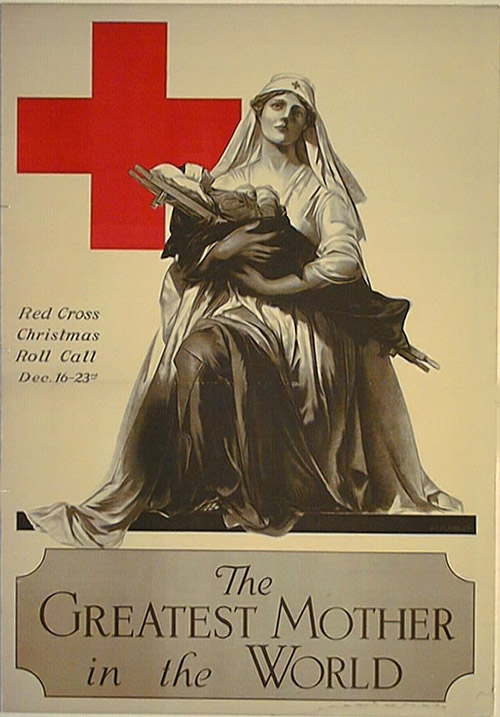
|
|
| This poster appeared in 1918 during a time when American women were
expected to be home doing domestic chores. But when the U.S. joined
WWI the need for women in the workforce and in volunteer services increased
dramatically. There was a call from the American government for women
to do their part in the war effort. This call was often portrayed
and announced through propaganda posters.
The role for females changed during the war, as seen in this image of a woman presented as the Virgin Mary in Michelangelo's Pieta. Instead of the ideal image of a women as being the "domestic angel," the war created an image of both a "motherly authority" and "sexually enticing goddess." (1) The figure of the woman, who is of white origin, in this poster portrays the "motherly authority." The fact that the woman is this poster is dressed in an all-white gown is another association with the Virgin Mary-pure yet powerful. The purity and caretaker images are depicted clearly in the poster. The striking face of this woman looks carved and cold, as does her dress. There is no emotion in her face, nor is there any motion implied by her dress. The artist has covered up the woman's body, a suggestion of purity but also of suppression. The woman is on one knee supporting a wounded soldier, instead of cradling the head of Christ. This is a call to women to be more than just the mother that they are at home, a call to be "The Greatest Mother in the World." Contradicting the traditional stereotype of male power, this poster portrays female domination and empowerment over that of a weakened male. While this poster appealed to women to join the Red Cross (which is displayed in the background like the Holy Cross), it also implied that they could play more public roles in American society. Even with so many conflicting ideas for women in this poster, the artist
maintains the message of duty directed toward American women. During
WWI and continuing on into the next war, this piece of propaganda, along
with others of a similar type, encouraged women to move out of the home
and into public services. Thus, the women's movement in American
history was spurred on by the war because of the need for women in the
workforce and in public service.
1. Peter Paret, Beth Irwin, and Paul Paret, Persuasive Images: Posters of War and Revolution from the Hoover Institution Archives (Princeton: Princeton University Press, 1992), 50. |